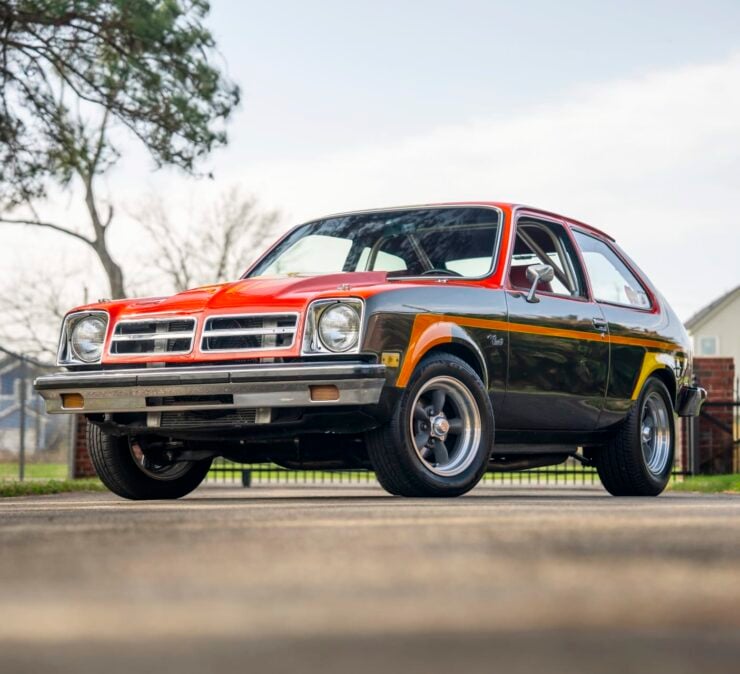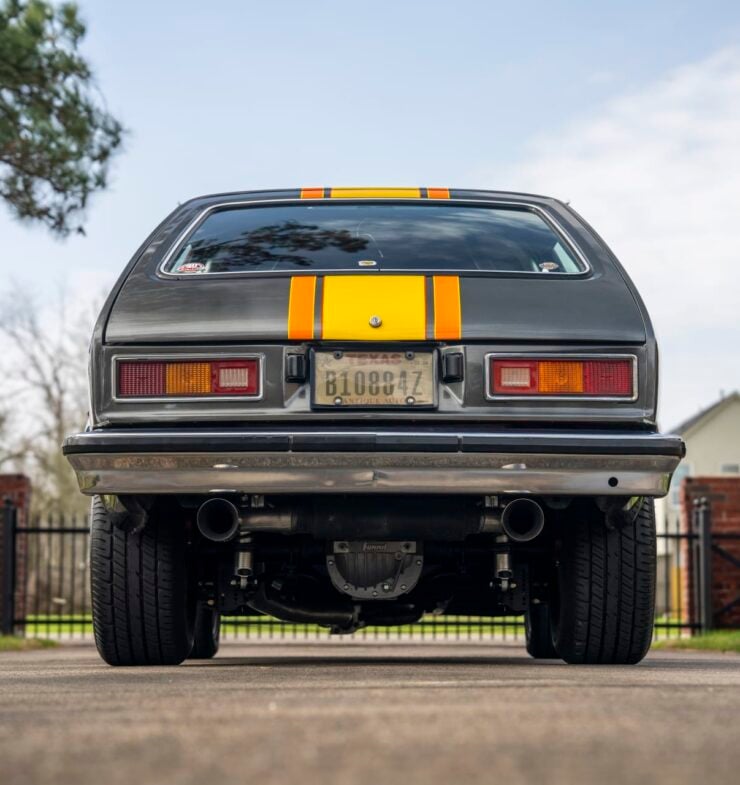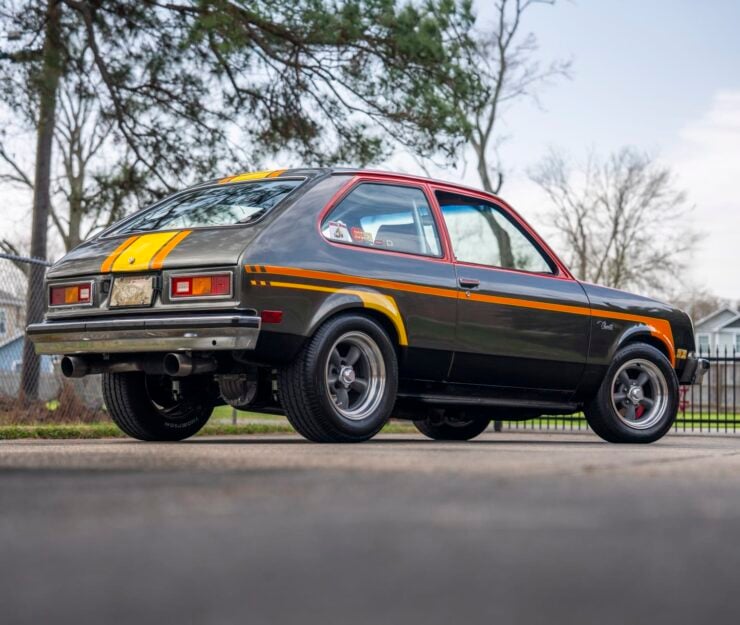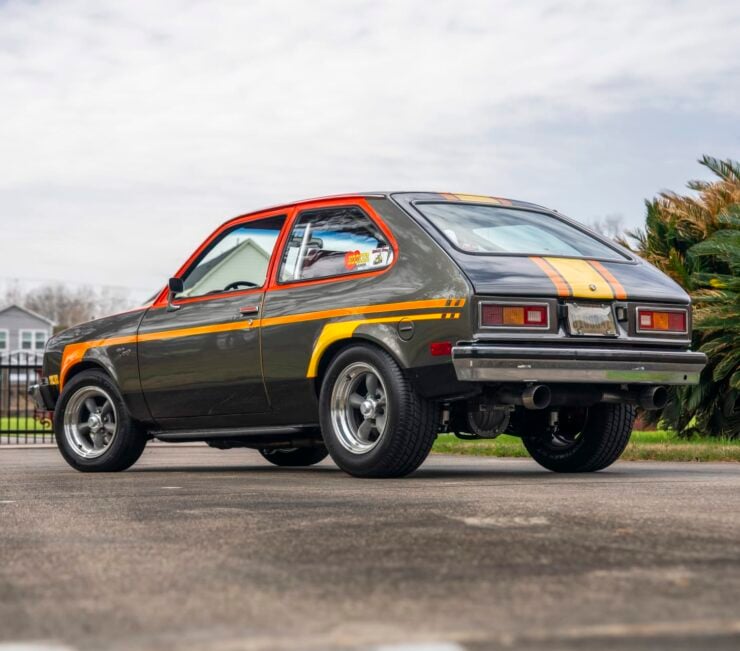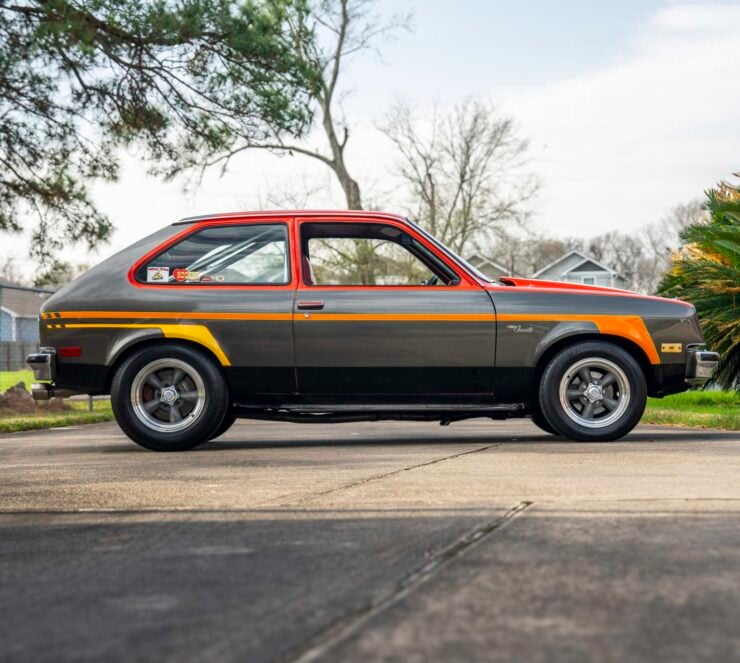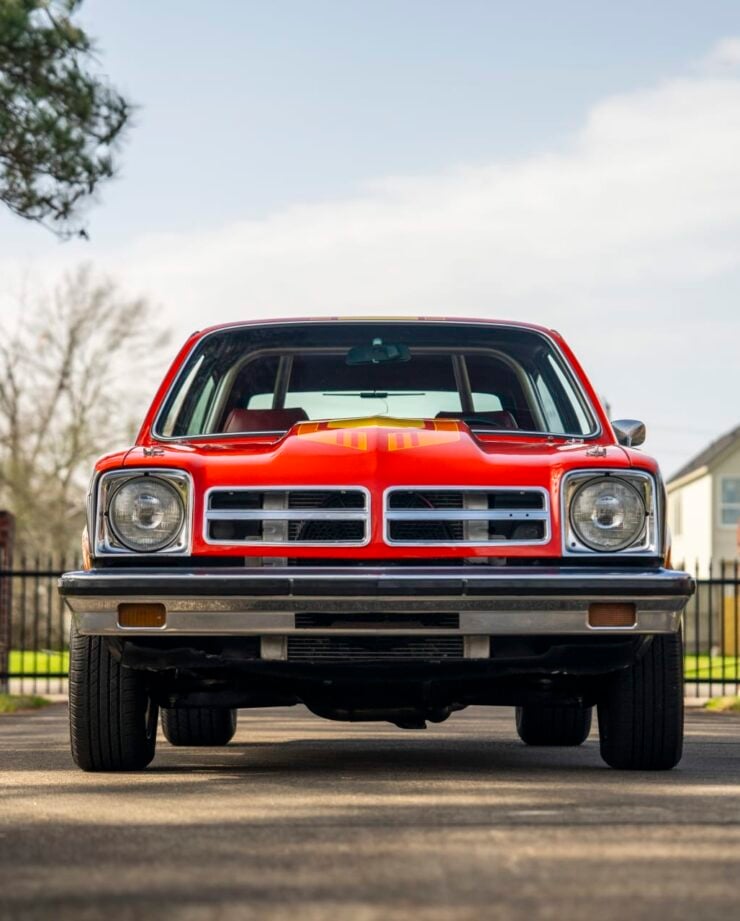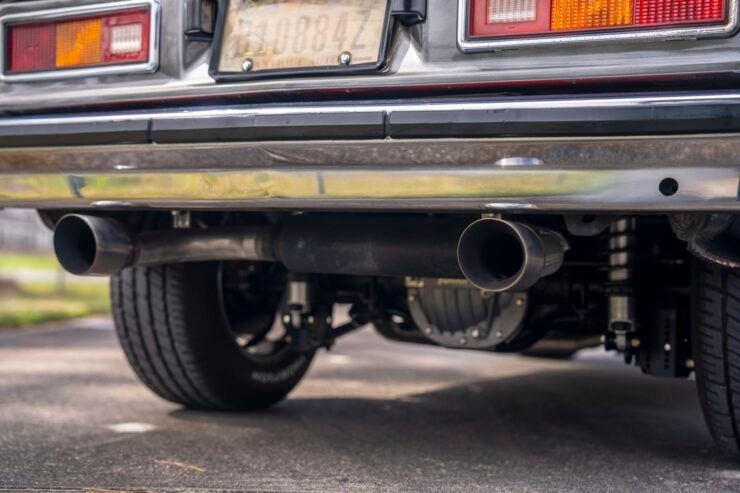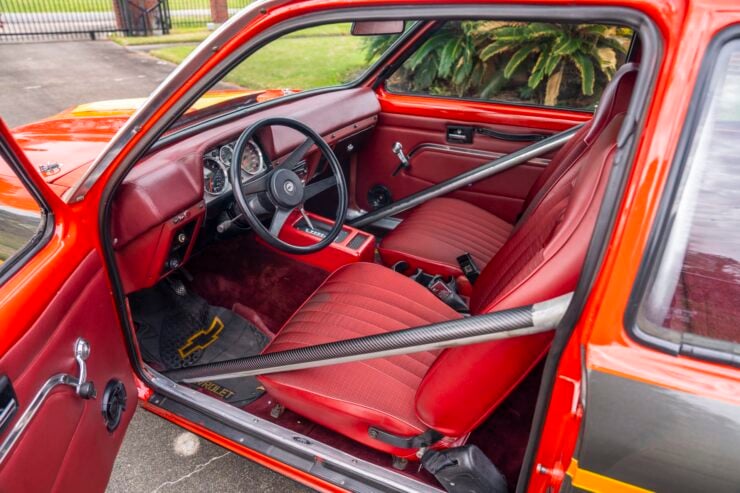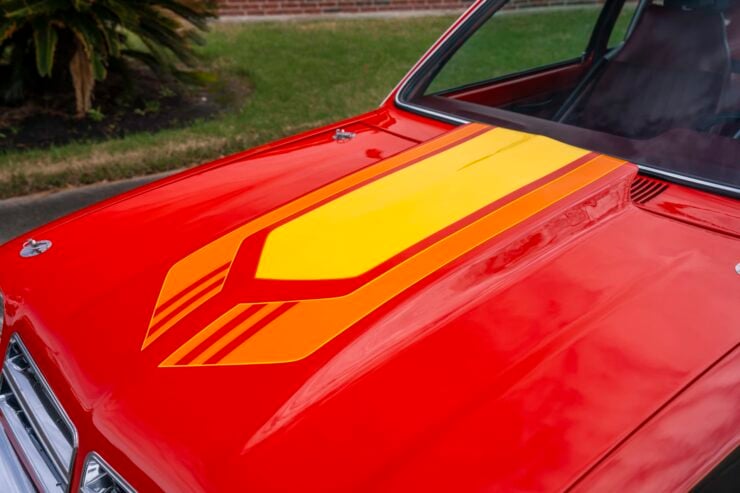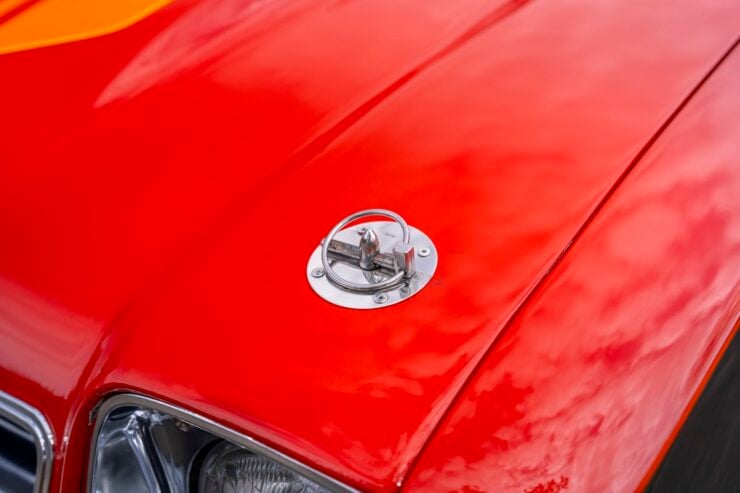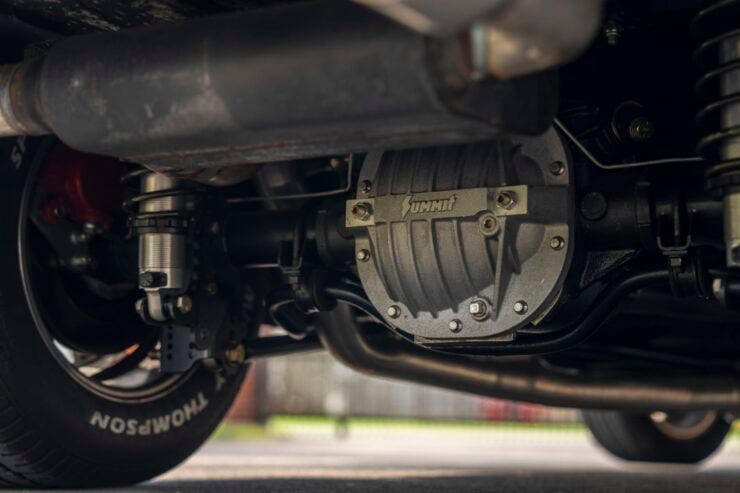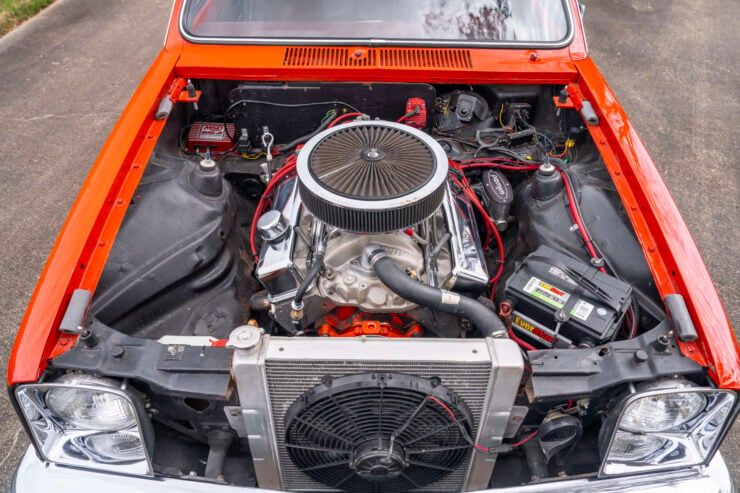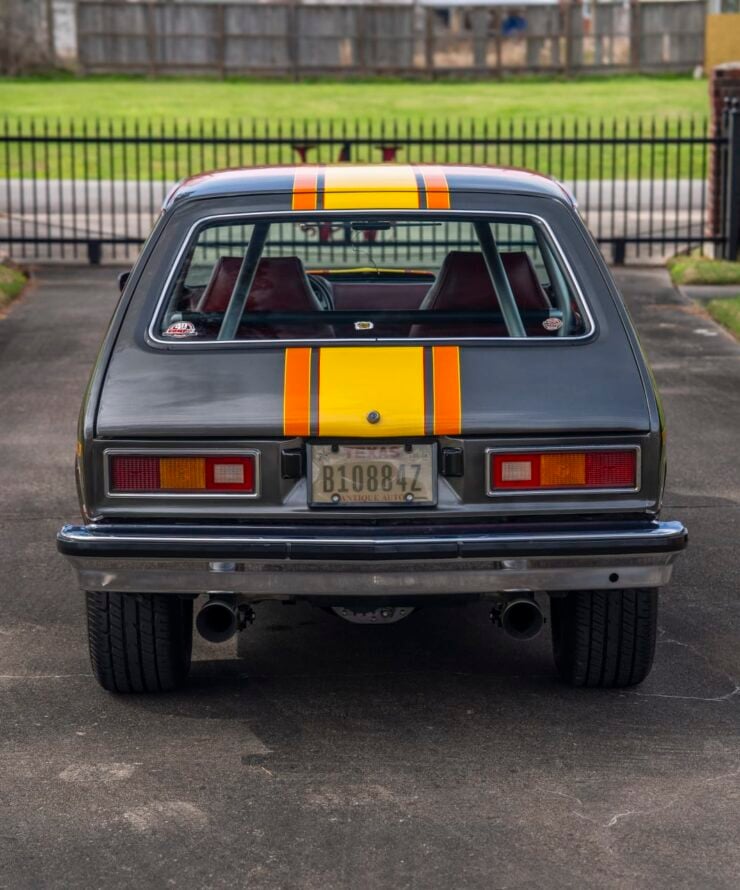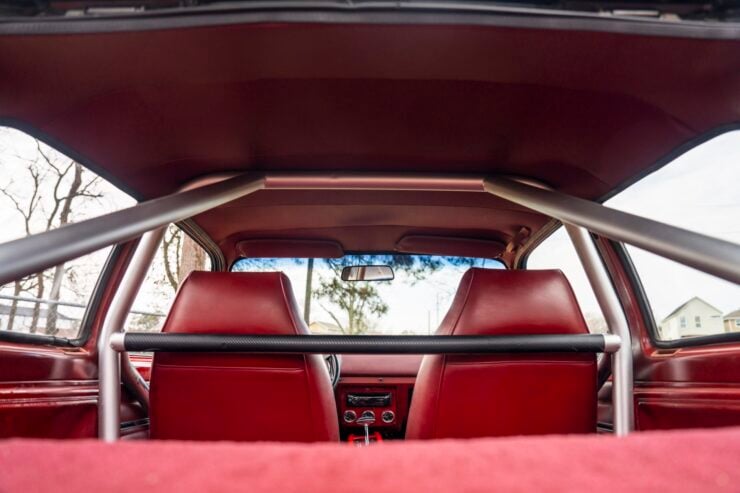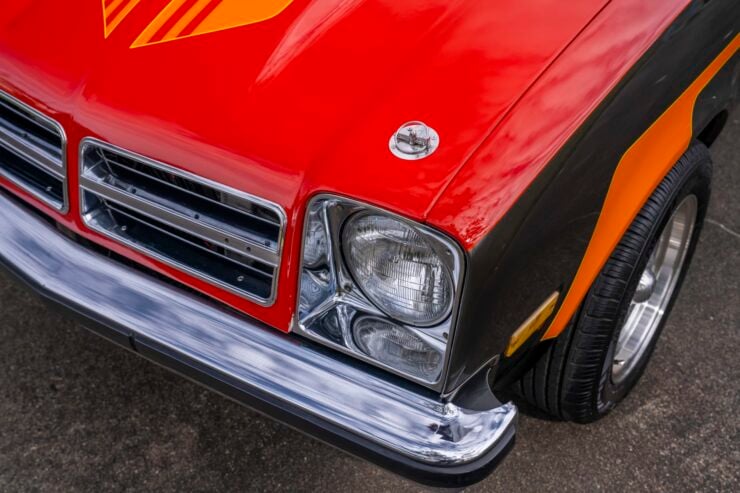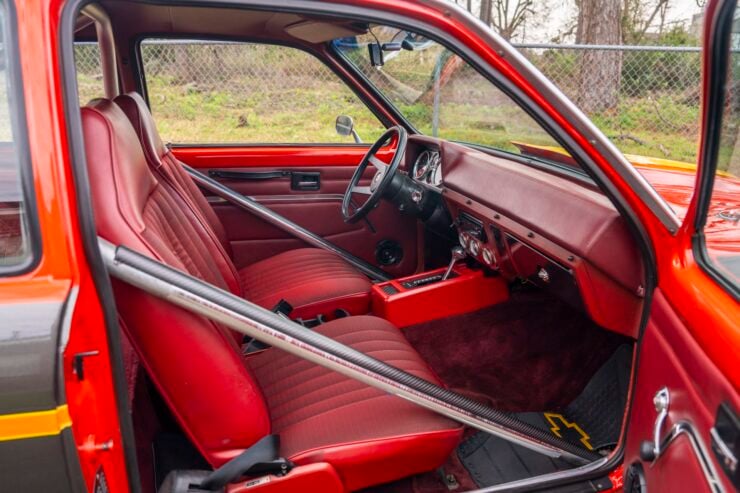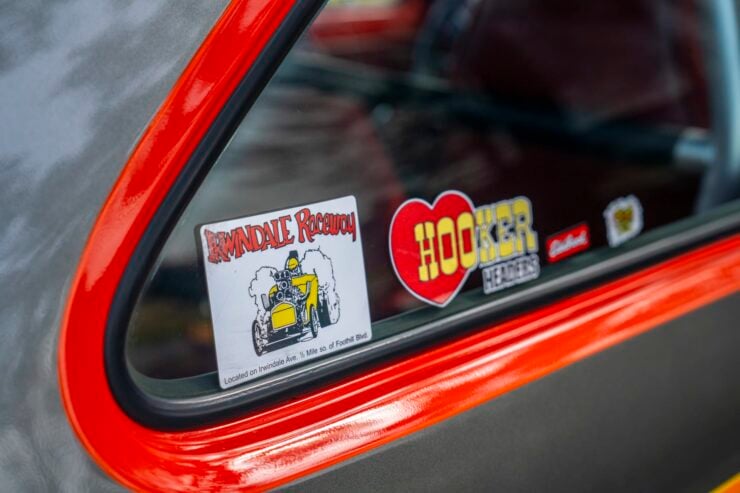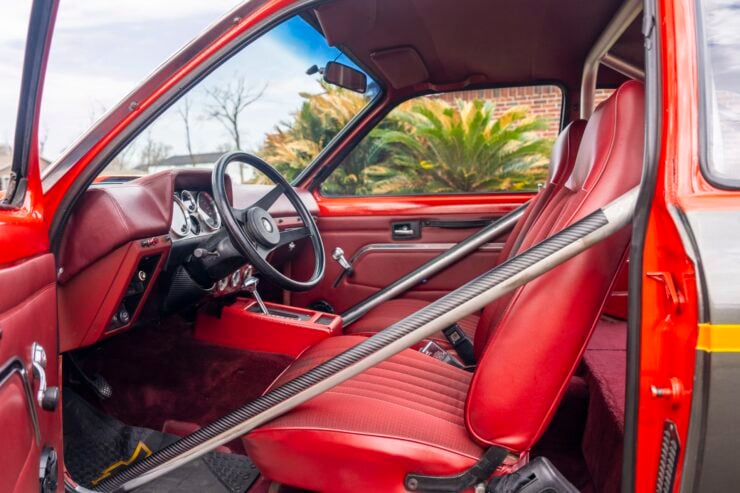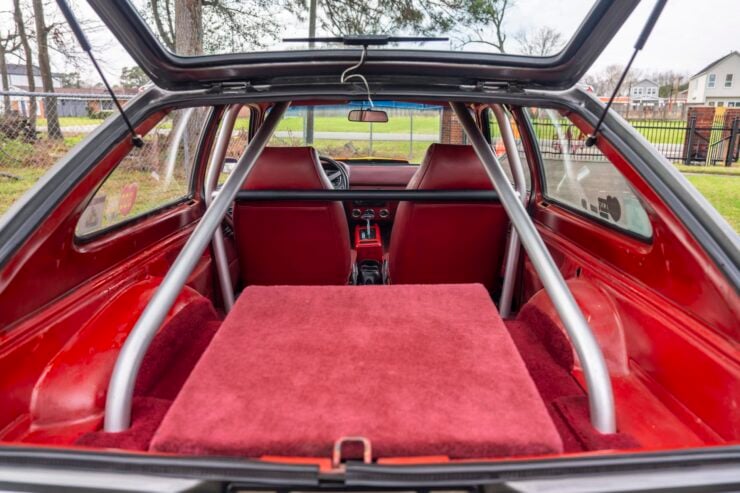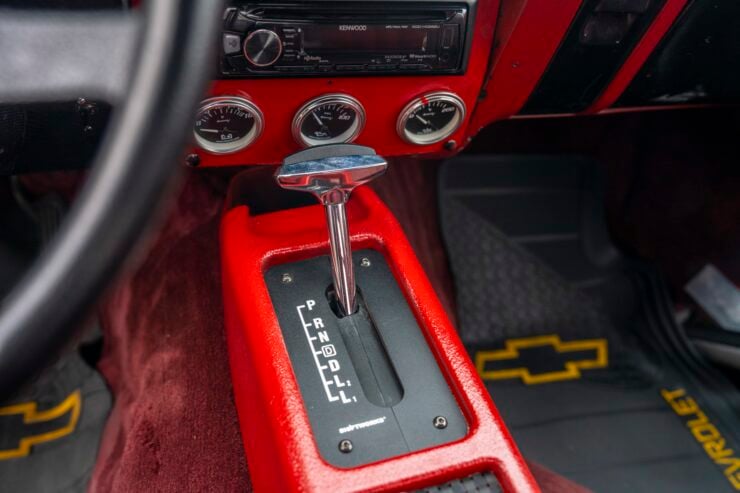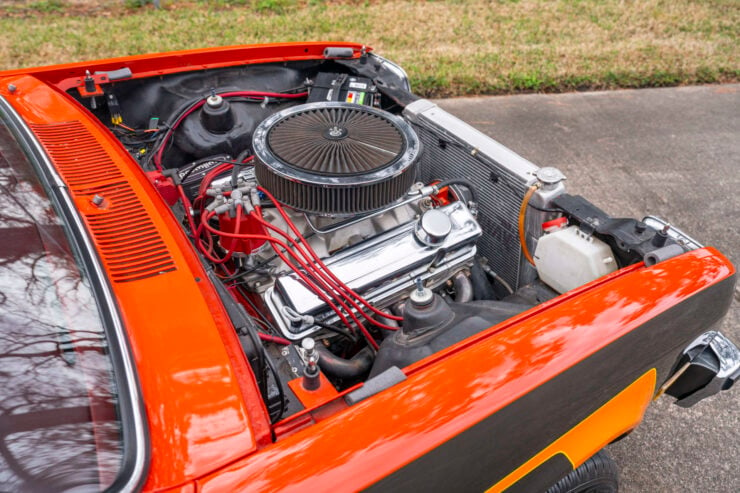This is a 1976 Chevrolet Chevette that was built by the Hooker Headers R&D department in the early 1980s, and featured in the November 1982 issue of Hot Rod Magazine. It’s now being offered for sale in excellent condition, as possibly the fastest Chevette ever made.
This car had its original V6 engine swapped out for a 350 small block V8 and a Turbo 350 transmission. It was given extensive modifications and then taken drag racing in California in-period, before being hidden away for 30 years.
Fast Facts – The “Hooker Headers Chevette”
- This is a 1976 Chevrolet Chevette that was built by the Hooker Headers R&D department in the early 1980s and featured in the November 1982 issue of Hot Rod Magazine. It’s now being offered for sale in time capsule condition, as possibly the fastest Chevette ever made.
- The car had its original engine swapped out for a 350 small block V8 and a Turbo 350 transmission. It was given extensive modifications and then taken drag racing in California in-period, before being hidden away for 30 years.
- The Chevrolet Chevette debuted in 1975 and was notable for being the first American production car built to metric measurements. It became the best-selling small car in the U.S. during 1979 and 1980 and was based on the GM T platform, used for multiple models worldwide.
- The Hooker Headers Chevette, now fitted with a 355 cubic inch V8, 447 bhp, and a 200 4R transmission, was drag raced before being mothballed. After being upgraded with modern parts, it’s set to be sold at Mecum on April 3rd.
A History Speedrun: The Chevrolet Chevette
Interestingly, the Chevrolet Chevette would be the first American production car built to metric measurements, and the first with a diagnostic plug to track down faults and failures. Though it’s not well-remembered today, the Chevette was a best-selling front-engined, rear wheel drive subcompact that sold 2.8 million units over its 1975 to 1986 production run. In fact, in 1979 and 1980 it was the best-selling small car in the United States.
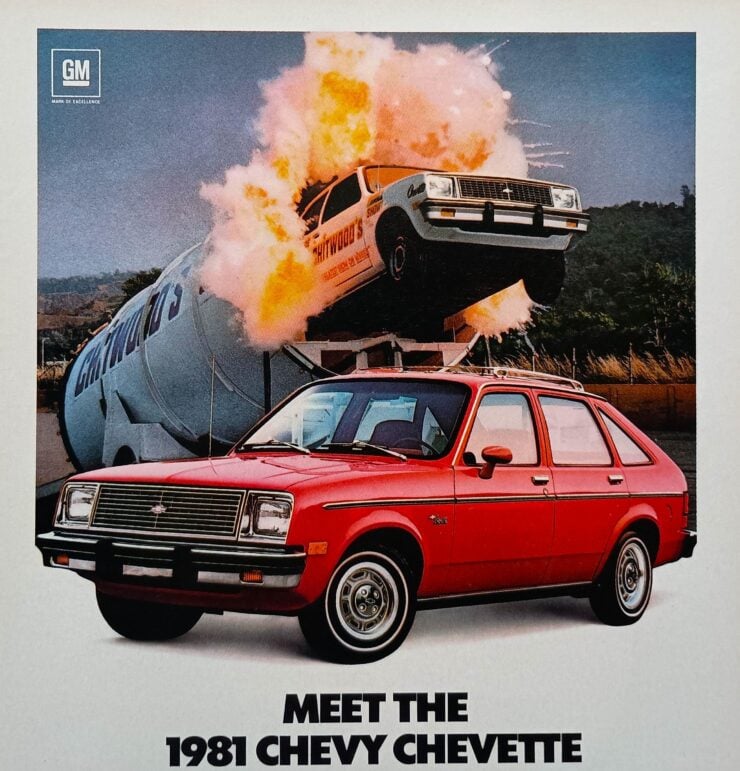

When it was released, General Motors marketed the Chevette as “Chevrolet’s New Kind of American Car,” though truth be told, it was relatively standard in its design, with a unibody shell, independent front suspension and a live axle rear end.
The car was based on the GM T platform which also underpinned the Opel Kadett C in Europe, the Vauxhall Chevette in the United Kingdom, the Holden Gemini in Australia, Isuzu Gemini in Japan, and the other Chevrolet Chevette made in Brazil for the local market.
In all, over 7 million examples of the T platform would be built and sold around the world, making it a wild success by the standards of the time.
The Oil Crisis And The Need For Efficient Cars
The development of the Chevette had been triggered by the 1973 Oil Crisis, which saw larger gas guzzling cars become difficult to sell to the American customer base. As a result, the Chevette was built to be lightweight, small, and powered by the most efficient engines possible – a series of 1.4, 1.6, and 1.8 liter gasoline inline-fours, with a rare diesel model also offered for a time.
With its low cost, good fuel efficiency, and low weight (typically under 2,000 lbs / 907 kgs) the Chevette sold well, though it did have a reputation as a bit of a staid “substitute teacher’s car” for much of its production run.
Today, the surviving examples of the Chevette do enjoy a cult following in some sectors of the automotive world, particular the rarer Rally and Woody versions of the car.
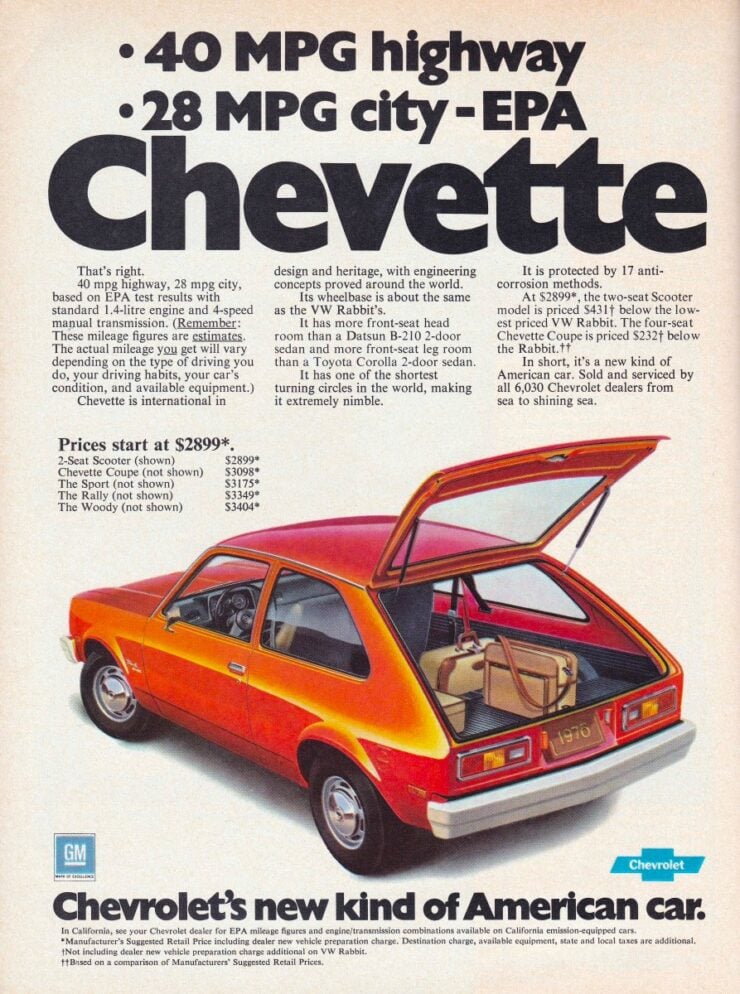


The Hooker Headers Chevette Shown Here
The car you see here started as a stock standard 1976 Chevrolet Chevette, it was bought by Hooker Headers, a well-known American performance exhaust company, and subjected to a full rebuild led by Jack Davis that was featured in the November 1982 issue of Hot Rod Magazine.
This Chevette was initially fitted with a Buck V6 engine when the build by the Hooker Headers R&D department began, but it failed to pass the stringent smog emissions test in California. As a result, the engine was removed and replaced with a far more respectable GM small block 350 cubic inch (5.7 liter) V8 mated to a Turbo 350 automatic transmission.
This drivetrain sent power back through a Ford 8.8 rear with a Trac Loc and 3.73 Ford gearing to the rear wheels. Given the low weight of the car and the far higher power output of the new engine, it was exceedingly quick off the line – so the Hooker Headers team took it drag racing.
In order to ensure it would be as safe as possible with its new drivetrain, the car was fitted with four-wheel disc brakes, wider 14×6 front and 15×8 rear tires, a roll cage, and suspension upgrades. After its time in the sun racing the 1/4 mile in California the car was stored away and mothballed for 30 years.
After the car was removed from storage it was given a series of upgrades, including the fitment of a 355 cubic inch V8 mated to a 200 4R metric automatic transmission featuring a TCI 376600 lock-up kit and a 2,800 TCI stall. This engine has been dyno tested, showing 447 bhp and 457 lb ft of torque.



The car has also been fitted with Hooker headers, of course, as well as Strange Engineering adjustable coilover shock absorbers, and Strange Engineering axles. The engine was modified with JE pistons and ARP hardware, Dart aluminum cylinder heads, a Comp Cams hydraulic roller camshaft, an Edelbrock intake manifold, and an S&S 750 CFM Holley carburetor.
The car is now due to roll across the auction block with Mecum on the 3rd of April and at the time of writing there is no price guide. If you’d like to read more about it or register to bid you can visit the listing here.
Images courtesy of Mecum
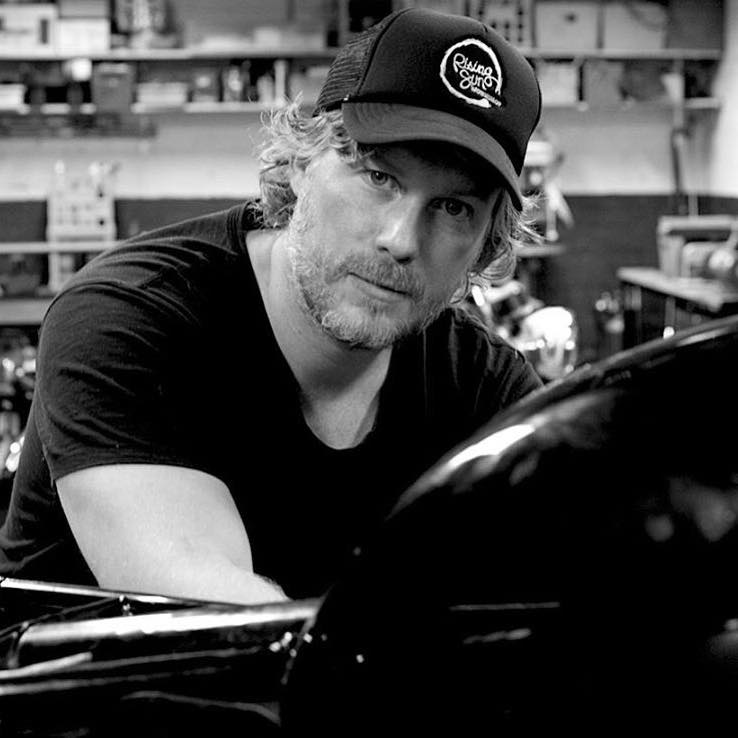

Articles that Ben has written have been covered on CNN, Popular Mechanics, Smithsonian Magazine, Road & Track Magazine, the official Pinterest blog, the official eBay Motors blog, BuzzFeed, Autoweek Magazine, Wired Magazine, Autoblog, Gear Patrol, Jalopnik, The Verge, and many more.
Silodrome was founded by Ben back in 2010, in the years since the site has grown to become a world leader in the alternative and vintage motoring sector, with well over a million monthly readers from around the world and many hundreds of thousands of followers on social media.


